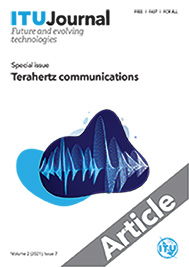|
Self-configuring asynchronous sleeping in heterogeneous networks
|
Authors: Ali Medlej, Eugen Dedu, Kamal Beydoun, Dominique Dhoutaut
Status: Final
Date of publication: 11 October 2021
Published in: ITU Journal on Future and Evolving Technologies, Volume 2 (2021), Issue 7 - Terahertz communications, Pages 51-62
Article DOI : https://doi.org/10.52953/FIEM4995
|
 | Abstract:
Nowadays, the heterogeneous wireless nano-network topology becomes a need for diverse applications based on heterogeneous networks composed of regions of different node densities. In Wireless Nano-networks (WNNs), nodes are of nano-metric size and can be potentially dense in terms of neighbouring nodes. Nano-nodes have limited resources in terms of processing, energy and memory capabilities. In nano-network(s), even in a communication range limited to tens of centimeters, thousands of neighbours can be found. We proposed a fine-grained duty-cycling method (sleeping mechanism), appropriate to nanonodes, which aims to reduce the number of receptions seen by a node during data packet routing. The present study reveals the usefulness of implementing the sleeping mechanism in heterogeneous networks, as well as configuring a dynamic awaken duration for nodes based on a density estimation algorithm. We also proposed an algorithm that helps in increasing the reliability of the packet received by the destination node. |
|
Keywords: Density estimation, heterogeneous nano-network, sleeping mechanism, routing
Rights: © International Telecommunication Union, available under the CC BY-NC-ND 3.0 IGO license.
|
|
|
|
| |